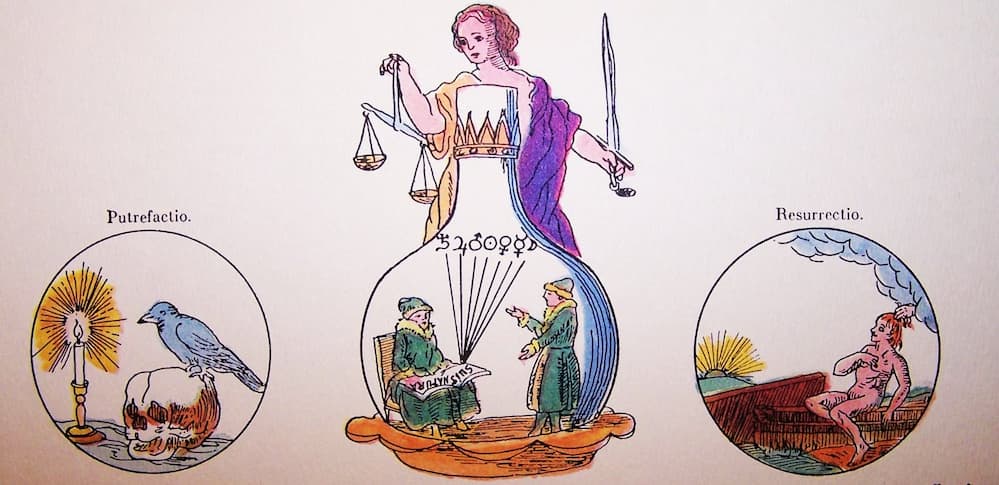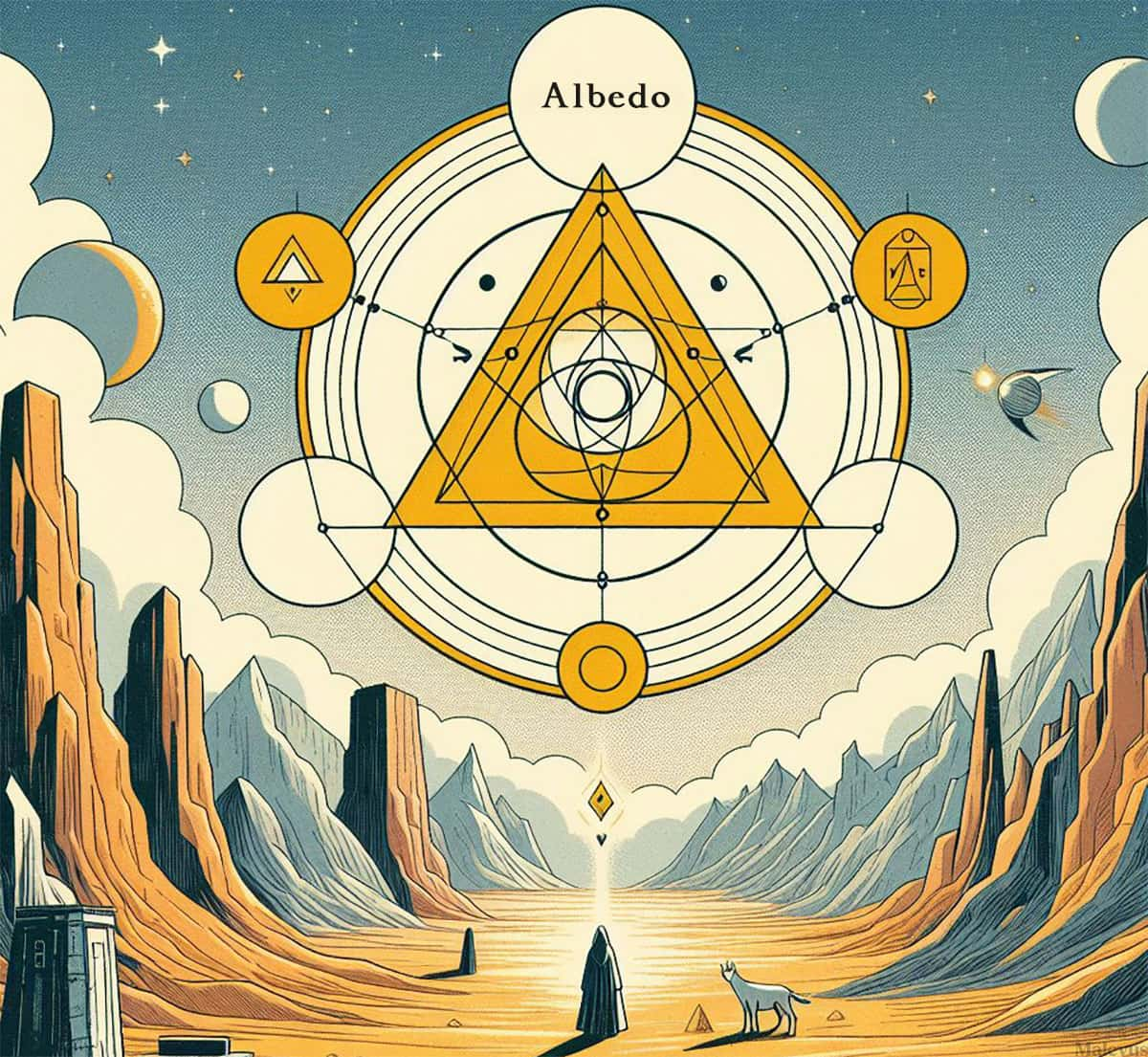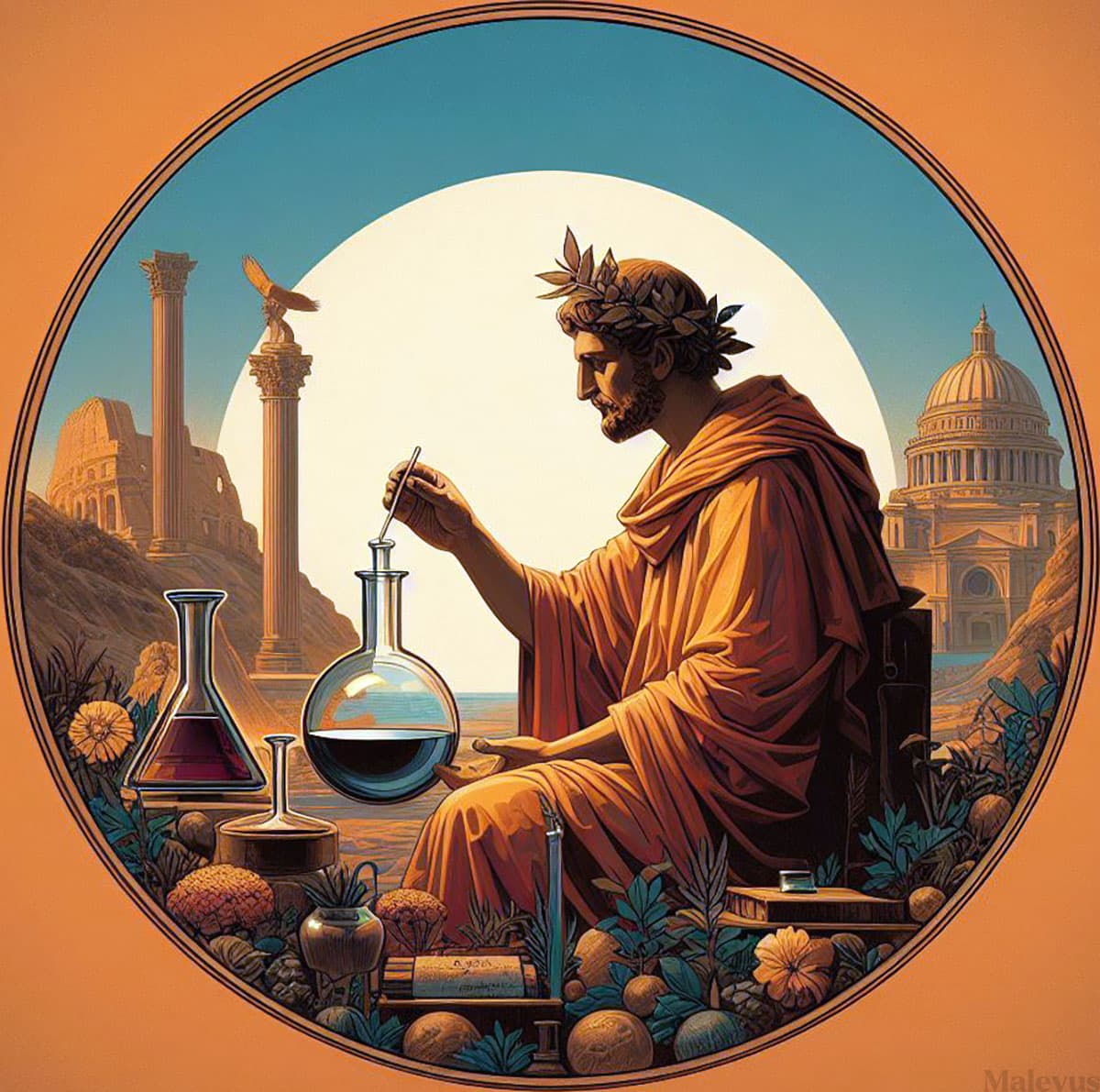The albedo, a Latin term meaning whiteness, is in alchemy one of the phases of the Magnum Opus, following the nigredo phase. Symbolized by a white swan, it is called “whiteness,” or alternatively ablutio, purificatio, mundificatio, or fissatio. It involves the purification of the formless mass produced by nigredo, washing away impurities to prepare it for the subsequent rubedo. In chemical terms, it corresponds to distillation and metaphorically represents the liberation of the soul from the bonds of corporeality.
Characteristics of Albedo
Albedo allows the transformation of lead into silver, acting in the phase following the dissolution of matter and recomposing it into a higher synthesis, following the alchemical motto solve et coagula. It represents dawn and rebirth, sometimes symbolized by a woman or a white rose.
It is also assimilated to the element of water for its purifying significance and because the ultimate goal of albedo is the creation of a fluid or vital liquid with regenerative virtues, akin to mercury or quicksilver, known as the elixir of long life.

On a macrocosmic level, the white of albedo is associated with the Moon, an image of purity and femininity, and among metals, with silver.
Another planet typically alluded to in albedo is Venus, formerly called “Lucifer,” meaning the bearer of light, as it radiates the white of light and knowledge in contrast to the darkness of nigredo. Although Christ alone was capable of combining such knowledge with freedom, he was therefore called “verus Lucifer.”
In Christian alchemy, the albedo specifically refers to the Resurrection of Jesus after the Passion and the sacrifice on the cross. Another allegorical episode of the albedo is the Baptism in Jordan, characterized by the descent of the white Dove. Venus, as the soul, is also an archetype of love, beauty, and creativity, serving as a bridge between the dark condition of the ego and the opening to higher dimensions of the spirit.

The alternation of white with black is often present on the entrance floor of Masonic temples, paved with white and black squares like chessboards, reminding us of the duality of light and darkness, spirit and matter, benevolent and malevolent powers. In the Divine Comedy, the albedo phase corresponds to the ascent through Dante and Virgil’s Purgatory. Alchemists attributed the phlegmatic humor to the albedo.
Analogies with the Psyche
In the realm of analytical psychology, Jung likens the albedo to the revelation of the archetype of the anima in men and the animus in women. According to Jung, the individual, after becoming aware of the negative aspects of their own Shadow, has learned not to project them outward but to constructively engage with them.
This involves moving away from unconscious identification with the undifferentiated collective psyche and consciously turning inward through reflection in the process of self-individuation. Ultimately, the albedo entails the distillation of the ego from the unconscious.



